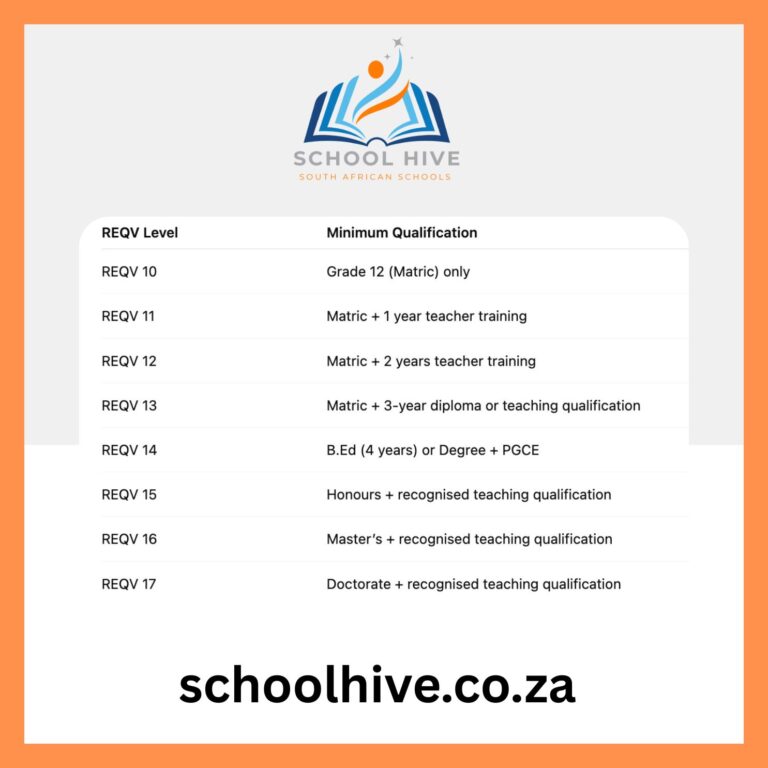How to Become a Grade R Teacher?
To become a Grade R teacher, follow these direct steps:
- Earn a Relevant Degree: Obtain a Bachelor of Education (B.Ed.) in Foundation Phase Teaching (or Equivalent), covering grades R to 3.
- Complete Practical Training: Participate in a practicum during your degree program to gain hands-on teaching experience in a classroom setting.
- Get Certified: Acquire certification by completing a Postgraduate Certificate in Education (PGCE) if your initial degree isn’t in education.
- Register Professionally: Register with a professional teaching council or regulatory body as required in your region.
- Engage in Continuing Education: Stay updated with ongoing professional development courses and workshops to enhance your teaching skills.
Becoming a Grade R teacher is a rewarding career choice for those interested in shaping the educational foundation of young children. Grade R, or Reception Year, is a crucial stage in early childhood development, focusing on children aged 5 to 6 years. This guide provides a step-by-step approach to becoming a Grade R teacher, emphasizing key qualifications, skills, and steps needed to enter this profession.
---Advert---
Step 1: Understand the Role of a Grade R Teacher
Grade R teachers play a pivotal role in the educational journey of children, introducing them to basic literacy, numeracy, and life skills. These educators are responsible for creating a nurturing environment that promotes learning through play and structured activities. They must also assess the developmental progress of each child to ensure they are prepared for more formal learning in Grade 1.
Step 2: Obtain the Necessary Qualifications
Educational Requirements:
To become a Grade R teacher, you typically need a formal teaching qualification. The most direct pathway is obtaining a Bachelor of Education (B.Ed.) in Foundation Phase Teaching, which covers grades R to 3. This degree provides comprehensive training in child development, educational psychology, and pedagogical techniques suited for young learners.
Alternative Qualifications:
If you hold a different degree, consider a Postgraduate Certificate in Education (PGCE) specializing in the Foundation Phase. This certificate allows individuals with non-teaching degrees to transition into the teaching profession.
Step 3: Gain Practical Experience
Practicum:
Most teaching degrees include a practicum component, where you will have the opportunity to teach in a classroom under the supervision of an experienced teacher. This real-world experience is invaluable, as it helps you apply theoretical knowledge and gain confidence in handling a classroom environment.
Volunteering:
Gaining additional experience through volunteer work at local schools or educational centers can also be beneficial. This not only enhances your resume but also provides deeper insight into the daily responsibilities of a Grade R teacher.
Step 4: Obtain Professional Registration
In many regions, Grade R teachers must be registered with a professional teaching council or regulatory body. This registration serves as official recognition of your qualifications and your ability to teach. It often requires submission of your academic credentials, evidence of your practicum, and sometimes a criminal background check.
Step 5: Continue Professional Development
Ongoing Learning:
The field of education constantly evolves, and staying updated with the latest teaching strategies and curriculum changes is essential. Engage in professional development courses and workshops to keep your teaching skills sharp and improve your educational practices.
Networking:
Joining professional organizations can provide valuable networking opportunities, access to resources, and additional professional development courses specifically designed for early childhood educators.
Pursuing a career as a Grade R teacher involves a commitment to learning and personal growth. By following these steps and continually seeking to improve your teaching methods, you can make a significant impact on the lives of young learners and lay a strong foundation for their future educational success. This guide serves as a roadmap for those aspiring to enter this vibrant and fulfilling profession.






